Spring is one of the most beautiful times of the year in Charleston, as its gardens come out of hibernation and begin to pop with subtropical color. The region has a long tradition of horticultural splendor going back to eighteenth century formal gardens and kept alive to the present by the Spring garden and tours hosted by the Historic Charleston Foundation. These events (and those hosted by the Preservation Society in the Fall when a different set of plants are in bloom) are a wonderful way to peek behind the scenes into the city’s spectacular private gardens. A short drive from the city, Middleton and the surrounding Ashley River plantations welcome visitors to their carefully manicured historic gardens year-round.
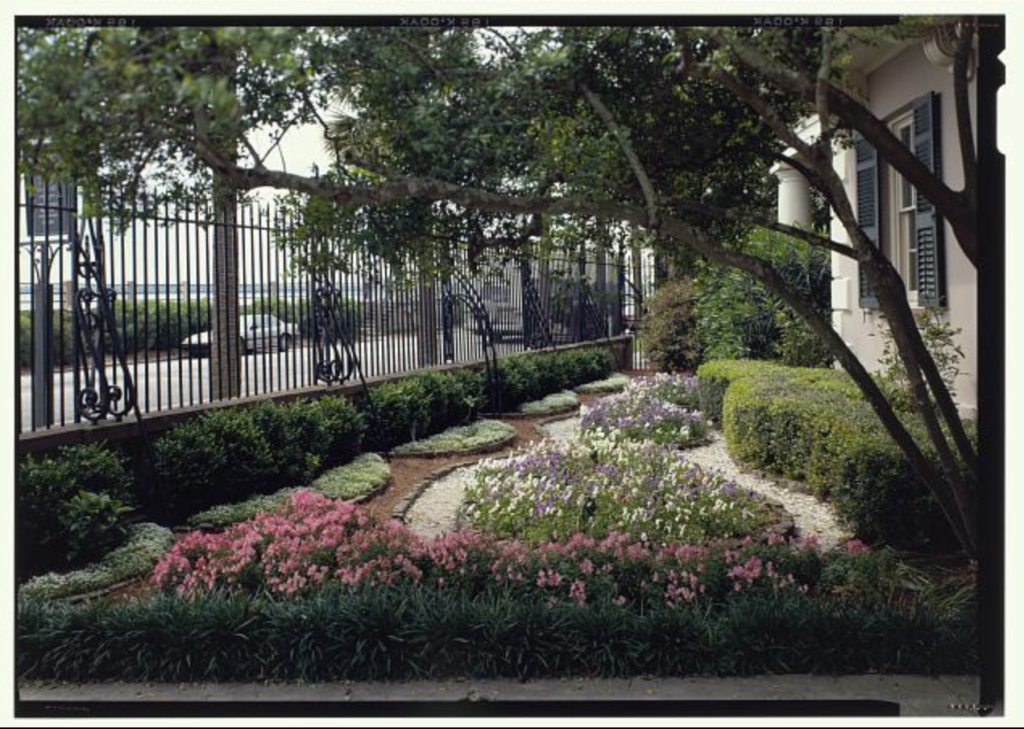
The Lowcountry’s warm, wet climate yields a host of exotic plants that fascinated botanists and horticulturalists from England and France. The weather also conducive for cultivating exotics from Asia, which Charlestonians imported with vigor. English naturalist Mark Catesby (1684-1749) collected and painted local flora and fauna like the magnolia, while Dr. Alexander Garden (1728-1791) is the namesake of the gardenia which he cataloged. Pennsylvania botanist John Bartram (1699-1777) came to Charleston several times in the 1760s to visit its nurseries and gardens. James Cothran notes that “Bartram called upon Thomas Lamboll and his wife Elizabeth who lived at the corner of King and Lamboll Streets. The Lambolls developed a fine garden described as the first of its kind in Charleston and richly stored with flowers and vegetables. Lamboll is credited with introducing the chinaberry or pride of India to Charleston.” Born in Charleston in 1779, diplomat Joel Poinsett became the first U.S. agent in South America, but he’s probably best known for bringing back the beautiful red flowering plant that bears his name still today. The poinsettia has been the staple plant of Christmas festivities ever since. Poinsett maintained a grand garden at his plantation and his townhouse on Rutledge Street throughout his life.
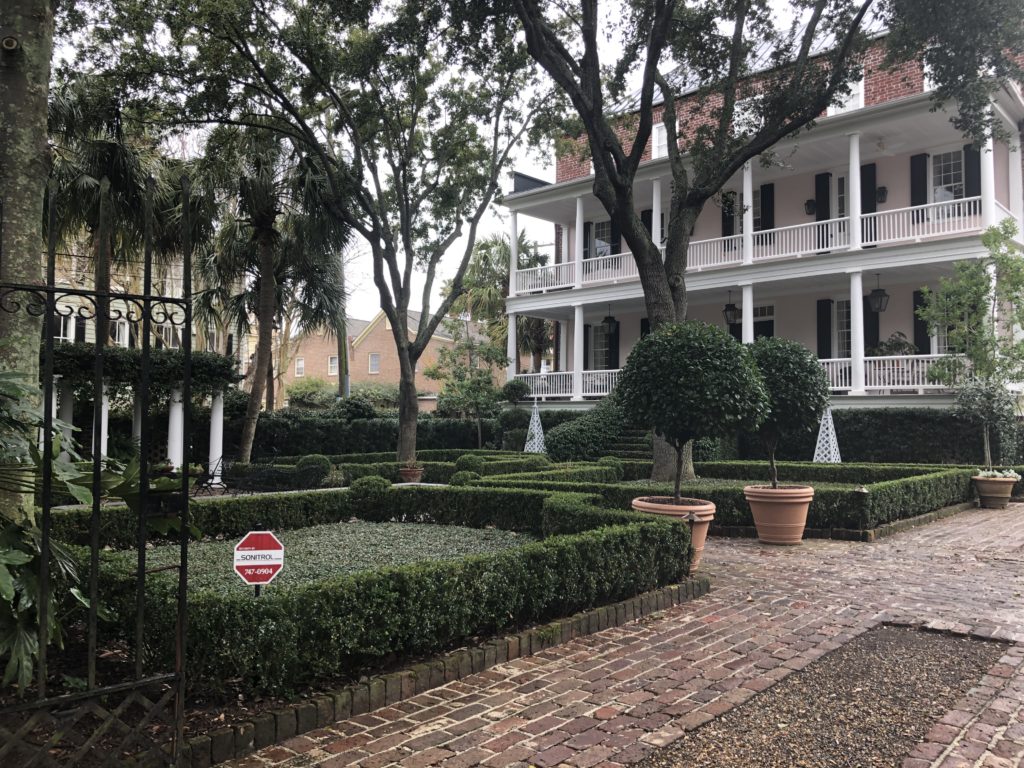
Charleston’s lots are narrow, with single houses or large Georgian double houses situated on the sidewalk and a drive leading toward the rear yard, where stables, kitchen houses, work yards, and fine gardens were located. Early gardens had a mix of practical, edible plants in “kitchen gardens”, including orange and lemon trees, carrots, and cabbages, and fragrant or ornamental plants. Boxwood borders were filled with flowering plants and topiaries.
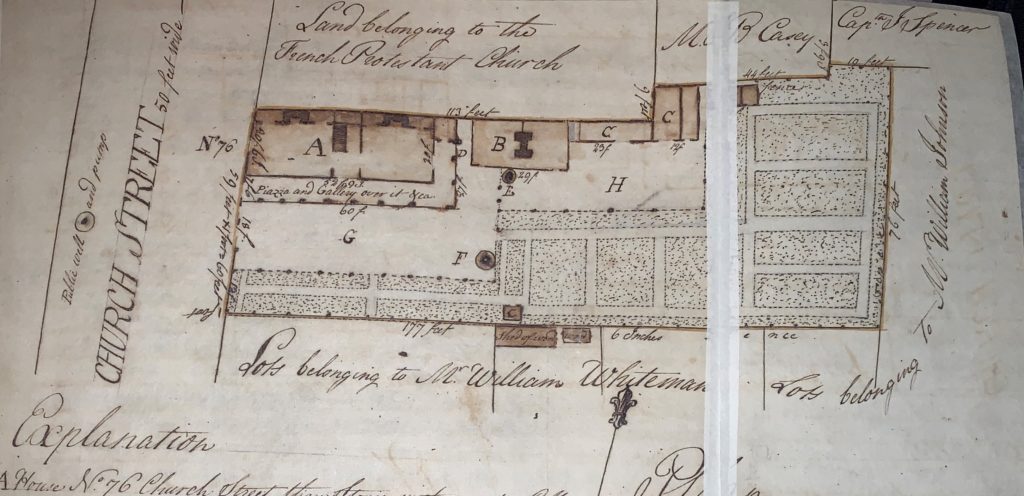
Charleston’s early gardeners shipped in bulbs, roots and seeds from European sources, but by the late eighteenth century, more were experimenting with hot houses and cultivating plants at nurseries here in the Lowcountry. Some horticulturalists like John Watson sold plants and bulbs and also opened their “pleasure gardens” to the public for a small fee, offering guests a beautiful place to enjoy nature in an era when there were few public parks and green spaces. Watson’s Garden, “where genteel company will be accommodated with the best liquors, attendance, coffee, tea, relishes, and sundry amusements” like musical ensembles, opened each year for the entertaining season in the late eighteenth century.
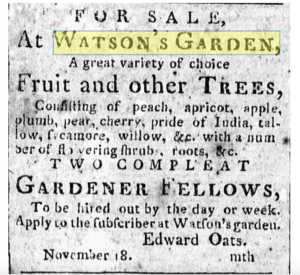
Botanist Andre Michaux was born in France in 1746. By 1785, he had been commissioned as the royal botanist for the French crown, taking him to America in search of useful new plants. He made Charleston his base of operations and established a 111-acre garden (located in today’s North Charleston near Aviation Avenue) that became a popular visiting spot for Charlestonians until Michaux died while in Madagascar on an expedition in 1802. Horticultural historian William Burns explains that Michaux was the “authority on 188 species native to the Carolinas . . . [and] Michaux also worked to acclimate foreign plants, mostly Asian, in America. Notable examples include the camellia, the mimosa from Persia, the gingko tree from China, and the crape myrtle from India.” Another Frenchman, Phillipe Noisette, worked to cultivate roses that can withstand our heat. Introduced in 1815, the Noisette rose or “blush Noisette,” this pretty pale pink rose is found in half shaded beds throughout the Lowcountry today.
Landscape preferences evolved over time, with carefully planned parterre gardens laid out with precision and inspired by French horticultural traditions of the Baroque era eventually giving way to a more organic or “picturesque” garden aesthetic of English origin becoming more popular in the nineteenth century. Middleton Garden is a prime example of the first, with orderly pathways and clear vistas to the sculptures and water features that dot the landscape. Middleton boasts America’s oldest landscaped gardens, envisioned by Henry Middleton in 1741 and reflecting “the grand classical style that remained in vogue in Europe and England” at sites like Versailles. Middleton overlooks the Ashely River and has terraced gardens and symmetrical butterfly lakes, tree lined allees, and marble statuary.

Magnolia Garden instead features a naturally shaped reflecting pond lined by oaks dripping with Spanish moss and beds of wild azaleas exploding in red, white, and pink. Visiting these two historic plantations, which are located near one another on the Ashley River, makes for a perfect day trip to see Charleston’s largest and most expansive landscapes.
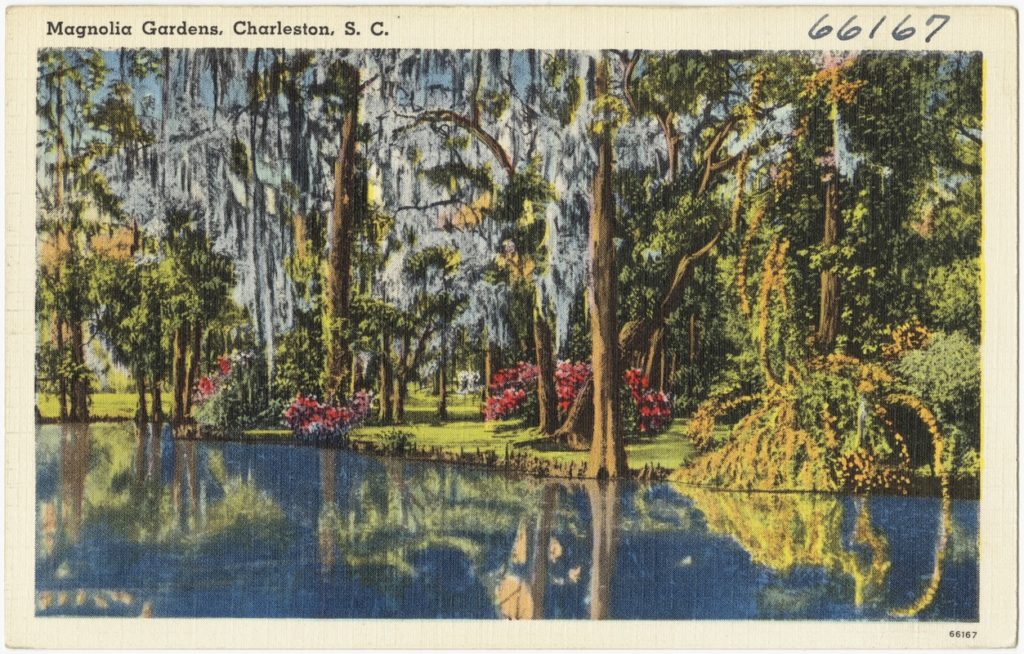
Tucked behind houses and between closely packed historic buildings, downtown gardens are much smaller but equally as beautiful as the rural garden landscapes. Town gardens often have brick borders, small lawns, crushed shell or brick paths, beautiful planting beds, and fountains or ponds within tall brick walls lined with Japanese creeping fig and accessed by elegant wrought iron gates.
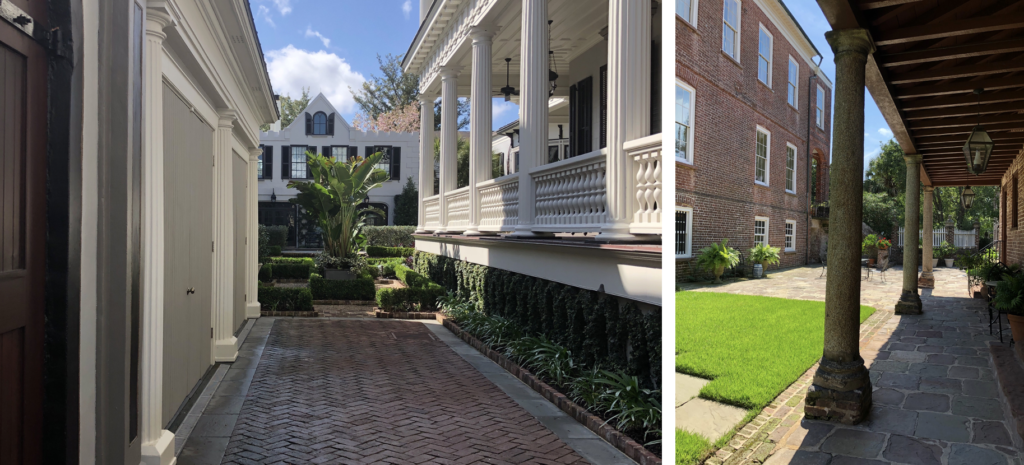
Loutrel Briggs (1893-1977) remains one of Charleston’s most famous and revered landscape architects. Briggs was born in New York City and graduated from Cornell University with a degree in “rural art”, now called landscape architecture. Noted landscape architect and head of the Briggs Landscape Survey project Sheila Wertimer explains, “he first came to Charleston in the late 1920s. it was a time when a number of wealthy northerners were “rediscovering” the city’s architectural charms. They were purchasing town homes and plantations as wintertime retreats. Briggs had a large following in New York, and he was asked by some of those clients to design gardens for their Charleston properties. His first local commission was in 1929 for Mrs. Washington Roebling, widow of the engineer who supervised construction of the Brooklyn Bridge. She was restoring the Gibbes House at 64 South Battery which includes on the city’s largest formal gardens. Not long after, he opened a Charleston office and spent his winters living and working here until he retired in 1959.” Briggs’ gardens stand the test of time because he used hardscaped borders of local brick that keep the structure of the garden rooms well intact. He used local color from azaleas, camellias, dogwood trees and water features as focal points.
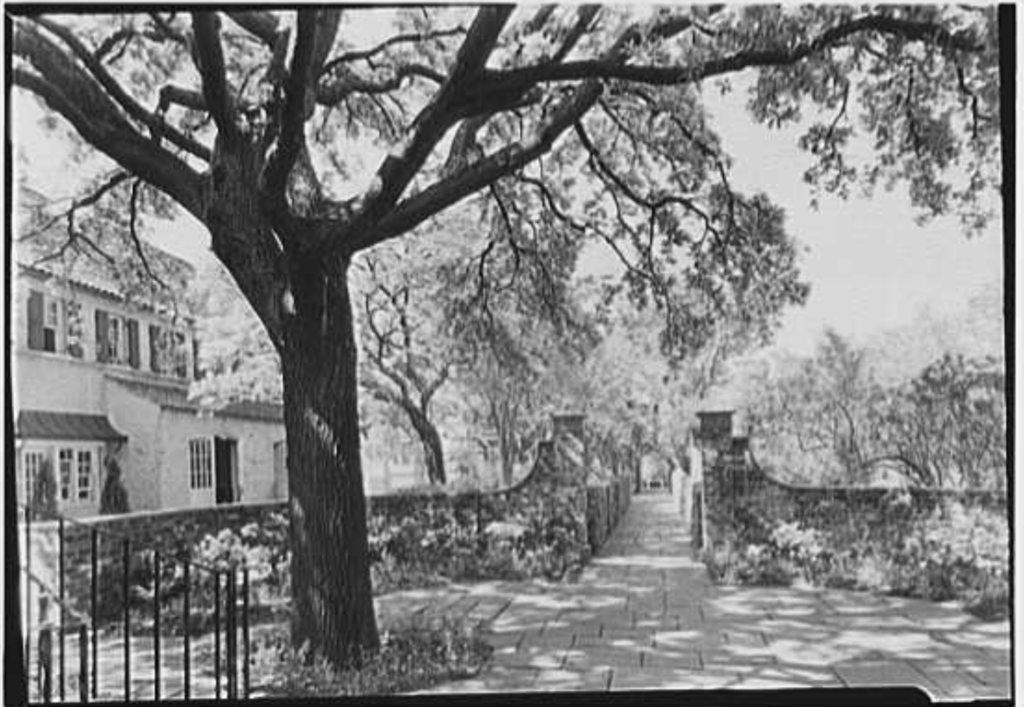
Every Spring since 1947, Historic Charleston Foundation’s Festival of Houses and Gardens “has provided intimate glimpses into some of the most beautiful homes and gardens” in the city through educational tours that are also the preservation group’s largest and most successful fundraiser. This year’s festival runs March 16th through April 9th, and includes a rotating schedule of unique tours, lectures, and luncheons at price points to suit everyone. South Battery, Tradd Street, and Glorious Gardens ($75 per guest) bring guests into a series of private gardens in walking distance from each other, with guides stationed at each site and along the way to provide assistance and historical information. HCF explains, “Colorful blooms are found in many of Charleston’s spring gardens, while others display elegant, limited palettes of green and white. Scale and proportion are deftly used to complement each house, whether it boasts a small courtyard space or a series of garden “rooms.” In addition to frequently favored plants, such as azaleas, camellias, climbing roses and tea olives, look for masonry walls, wrought iron gates, parterres edged with boxwood, water features, statues, and garden rooms with slight but changing elevations as you stroll through a selection of sophisticated Charleston gardens.” Book far in advance for the “Favorite Gardens of Charleston” tour on April 4th with sought after landscape architect Glen Gardner, who shares his favorite recent and historic downtown private gardens. To see the full calendar of events, visit https://www.historiccharleston.org/blog/events/category/2022-festival-of-houses-gardens/.

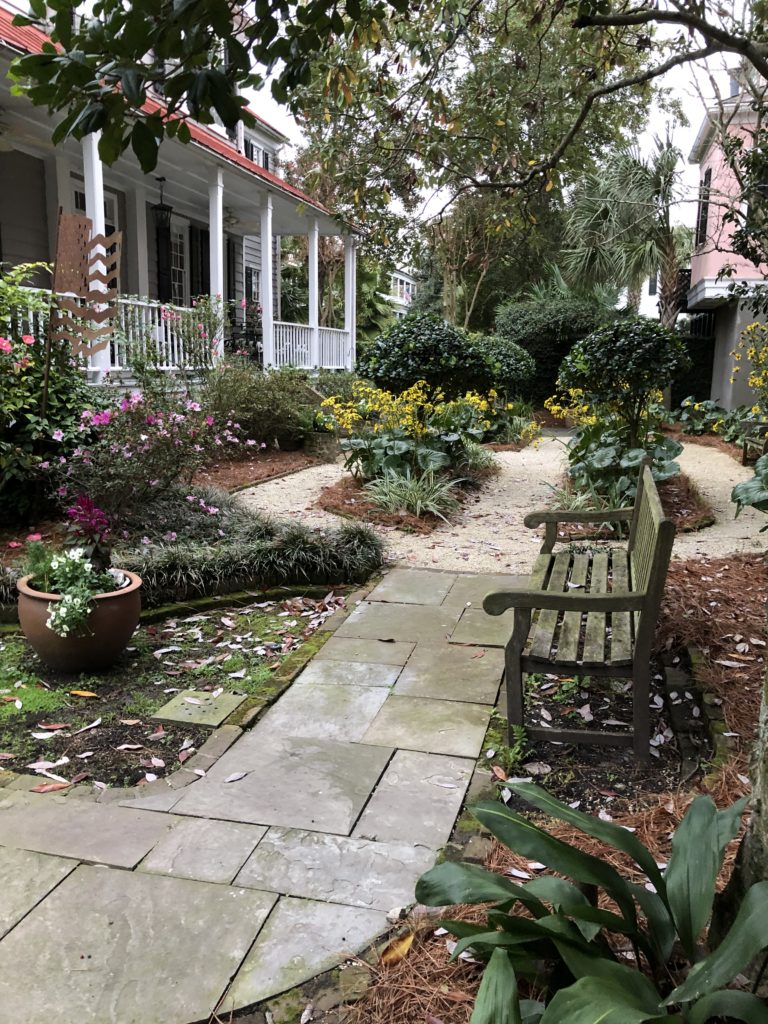
The large garden at the Nathaniel Russell House (51 Meeting Street) is open year-round. The Russell house costs $12 to tour (highly recommended, the house is fully restored and furnished with period pieces) but the garden is open to the public for free. Russell had a large double lot for his grand 1808 town house, yielding an unusually spacious urban garden. Historic Charleston Foundation which operates the site has curated the garden’s lush plantings with small signs giving the names of the exotic and native species of plants, which sit below large magnolia trees. This year, experience the garden in a special way with the Festival’s Rose and Roses event ($55) and enjoy a Spring stroll, white and rose wines, and light hors d’ouvres while listening to Palmetto Strings violin/viola duo.
Every Fall, the Preservation Society offers their Fall Tours and Master Series festival of events, and since Charleston is a subtropical climate, there are plenty of beautiful plants in bloom during that season as well. Piazzas and Gardens ($75 per person) features 4-6 houses and gardens in the historic district, and “these tours include an informative and entertaining walk along private house piazzas and porches where docents will delight guests with tidbits of architecture, history, and lore. In some instances, guests will be invited behind the garden gate to enjoy some of the finest enchanting private gardens in the historic district.” On Wednesdays, the Master Garden Series ($150 for non members, $135 for PS members) are smaller and more intimate, and are led by a landscape architect, garden designer, or professional horticulturalist. To learn more, visit https://www.preservationsociety.org/events/fall-tours/the-fall-tours/.
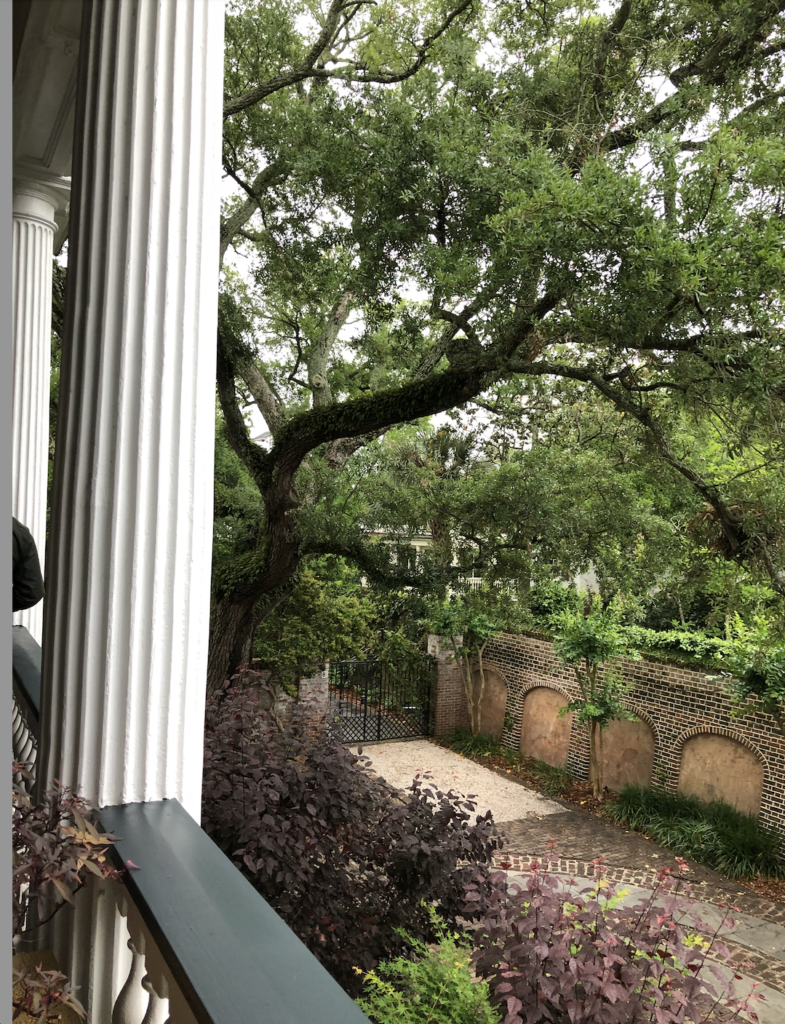
Year round, Mrs. Whaley’s Garden at 58 Church Street is open Friday, Saturday, and Sunday afternoons for a suggested donation of $10 per person. The 30 by 110 foot garden was laid out by Briggs in 1942 and has continued to evolve with new plantings. Tucked behind a colonial era single house and despite being dubbed “the most visited private garden in America”, Mrs. Emily Whaley’s Garden is off the beaten tourist path and really feels like a secret garden. Whaley (1911-1998) was a lifelong avid gardener who is immortalized both through here memoir, Mrs. Whaley and her Charleston Garden and by her family’s decision to keep the garden open for future generations to enjoy.
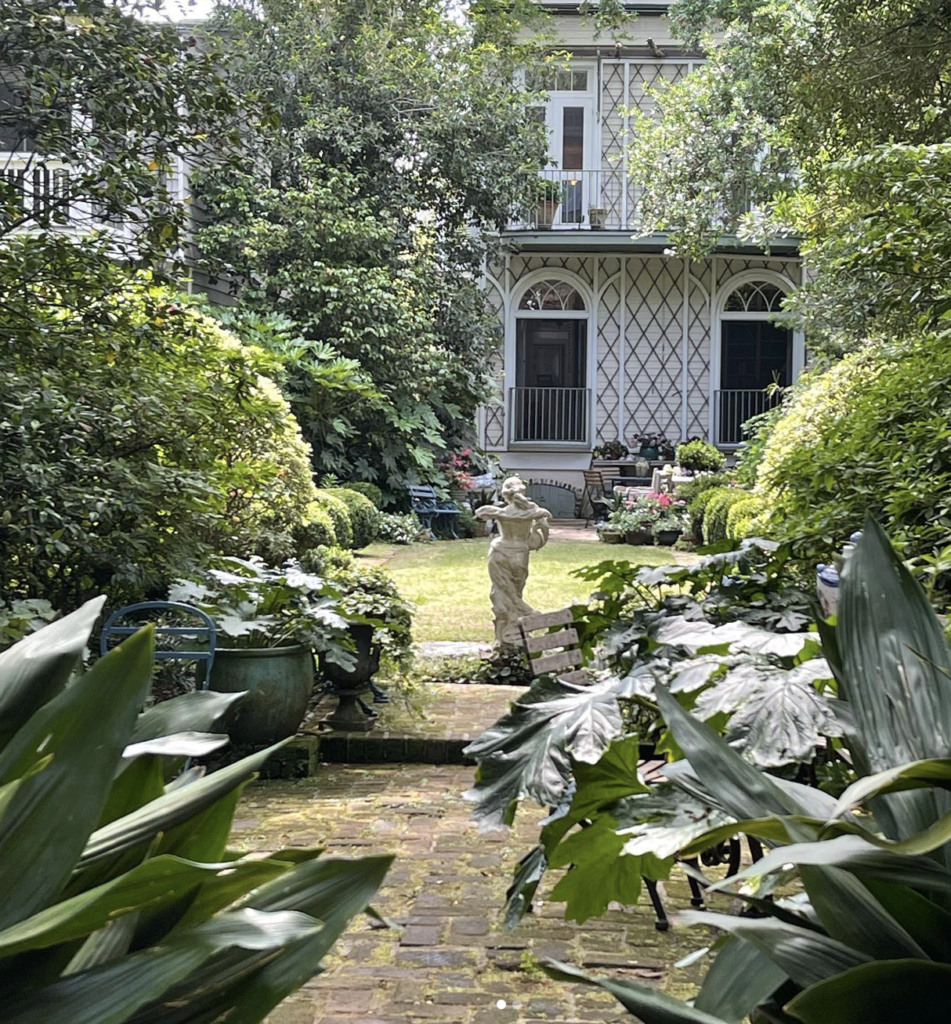
Sources:
- Sheila Wertimer for the Preservation Society. “Eden’s lost and found- the gardens of Loutrel Briggs. Preservation Progress. June 2006, pg. 18-19.
- Emily Whaley. Whaley and Her Charleston Garden. In Conversation with William Baldwin. New York: Simon and Shuster, 1997.
- James R. Cothran. Gardens of Historic Charleston. Columbia: University of South Carolina Press, 1995.
- City Gazette. “Watson’s Garden.” 25 April 1793.
- Lester D Stephens. Science, Race, and Religion in the American South: John Bachman and the Charleston Circle of Naturalists, 1815–1895. Chapel Hill: University of North Carolina Press, 2000.
- https://www.historiccharleston.org/blog/events/category/2022-festival-of-houses-gardens/
- William E. Burns. “Andre and Francois-Andre Michaux.” South Carolina Encyclopedia. https://www.scencyclopedia.org/sce/entries/michaux-andre-and-francois-andre-michaux/
- Nella Bailey McGough. “The Sweet Southern Noisette Rose.” Southern Living. https://www.southernliving.com/garden/flowers/noisette-roses
- Library of Congress photo collections
- http://www.mrswhaleysgarden.com
- https://www.middletonplace.org/explore/gardens/


